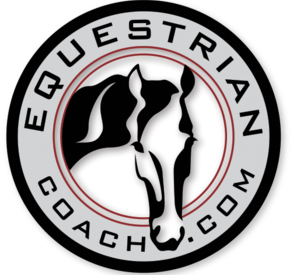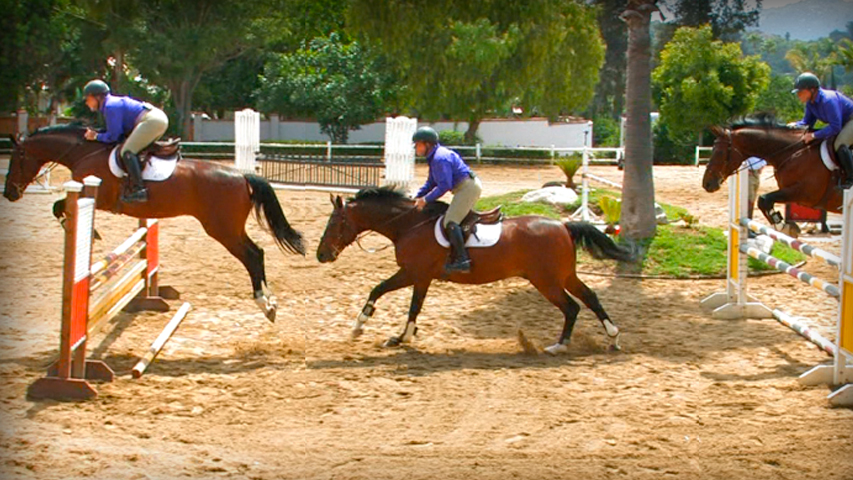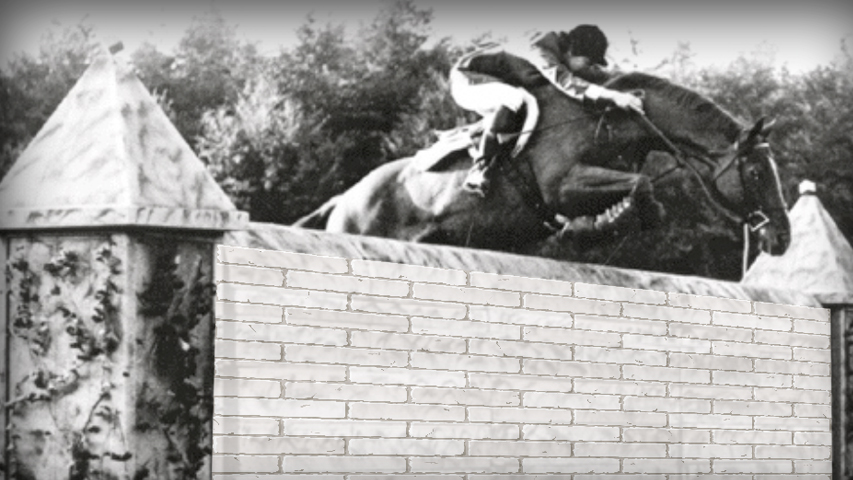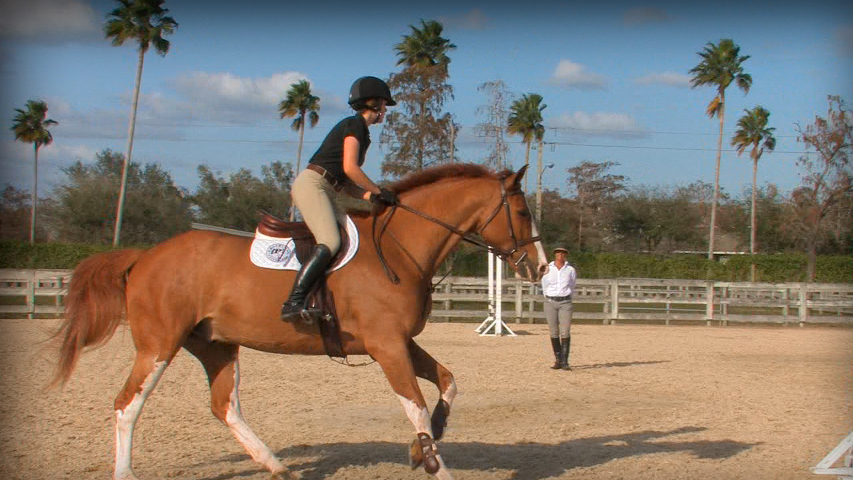Linda Allen
- 09 Nov, 2017
- 0 Comments
- 6 Mins Read
Does Your Horse Have a Long Stride and Struggle with Combinations?
Submitted by member: Sharon
I bred a Thoroughbred/Oldenburg cross who is now 7 years old and about “20” hands. He started the Grand Prix this year with Kris Killam. He has placed in every one but one. He is very brave and has plenty of scope. We find his monster stride and extremely long legs makes verticals and combinations more difficult for him. What suggestions or videos can you recommend to help him develop techniques to help him in these two areas? He needs more flatwork to cope with the more technical courses.
Answer by Linda Allen
While very capable Jumpers at all levels come in all sizes and shapes, very big and tall ones do create their own set of challenges when they are learning their craft. (By the way, I do hope you are exaggerating just a bit when you say ‘about 20 hands’ since a couple of the pure draft breeds are the only ones that I have seen THAT size!)
When dealing with a very leggy and tall youngster—and I consider a 7-year-old to still qualify as a young horse, especially with half German breeding—some things come easy and others with much more difficulty. Usually, stride and power come easiest to the big ones, while cleverness in adjusting stride, and quickness to jump well from the base of a jump, are much harder for the big ones to master.
To be successful as a Jumper today, every horse must have both power and cleverness and only a rare few come with equal amounts of both; it is the trainer’s job to bolster the weaknesses of the horse through effective training. I believe the best way for a horse to learn new skills is through gymnastics. The set distances between the fences let the horse figure out the striding and balance needed to negotiate the various lines you can set up and acquire the ‘tools’ to handle everything a course might ask.
Big horses and those with particularly long strides need lots of practice in shorter distances to teach them how to compress their stride and their frame without losing impulsion. Always start with low fences that aren’t impossibly short for your horse and assure that you always enter every gymnastic line with a good rhythm (neither too quickly nor without some pace). Normally I start with a trot entrance, with an 8’ placing pole, and then when your horse handles gymnastics well switch to a 9’ rail to canter in.
Never let a horse learn to jump diagonally to give themselves more room. It is essential that they learn to compress themselves without any loss of straightness. Maintain a good rhythm from start to finish; permitting neither slowing down nor speeding up. Use a wide variety of different set-ups utilizing cross-rails, verticals, oxers, and ground poles. Just be sure that each exercise will encourage him to shorten and lighten his step so that an effort over one element doesn’t result in loss of balance or rhythm on the following ones. Once your horse has a feel for the rhythm and striding, I like to raise the verticals a bit bigger (always with VERY generous ground-lines), while leaving the oxers somewhat lower but increasing the width substantially as your horse learns. An oxer in the middle of a line can be increased in width by shortening the distance since a compressed, powerful stride in front and after an oxer is what you are looking for. The rider should never interfere with the horse’s concentration through these exercises. Other than assuring a good entrance, leave the horse on his own to solve the challenges of stride and balance. You are creating tools for the horse to rely upon when less comfortable distances arise as they always will in competition, especially during jump-offs or speed classes. Don’t drill and drill over the same exercise or raise it higher than the horse can successfully deal with. Jumps don’t have to be large to be effective—width and variety work just as well and don’t take the horse’s confidence away or lead to soundness problems. Even a horse doing Regional level Grand Prix can learn a lot with verticals not much bigger than 1.25 m and oxers of 1.15 m as long as their width exceeds height by 15-25 cm. The person on the ground watching and adjusting the fences is as important as the rider for judging when your horse is trying and learning without ever over-doing it. I feel it is always better to do only a few repetitions in a session—always stopping when the horse ‘gets it’—and school different set-ups more frequently. A variety of different straight gymnastics can be found in my book, “101 Jumping Exercises for Horse and Rider.”
Since these sort of straight gymnastics don’t deal with balance on turns, I like to mix in schools over 2 or 3 verticals set on a circle with 5 to 6 strides between. Big horses often need to learn how to handle those long legs when they meet a fence on a bend (inside front and back need to be quicker and practice helps hone this skill). Again, the easiest way to set up vertical fences in a ‘clock’ pattern can be found in my book.
While even younger horses are fully capable of handling bigger jumps when they meet them straight, in balance, and at comfortable take-off spots, it takes time for them to learn to handle themselves in the variety of situations that they will undoubtedly encounter on course. A horse that lacks the ‘tools’ to solve every situation they meet in competition inevitably ends up stopping or knocking down fences. Take the time and effort to educate your horse so that he can go as far as his natural talent will take him and enjoy a long and successful career.
Video Recommendations:
The Kusner Gymnastic
Bernie Traurig
Bernie was originally introduced to this gymnastic many years ago when he saw it executed by his close friend and amazing Olympian, Kathy Kusner. It eventually proved to be useful in his own career as a coach. In this topic he passes on a very useful exercise that teaches horses to regulate their stride in tight combinations to encourage their best jumping effort.
Running Time: 11 minutes and 1 seconds
Vertical Vertical Combination
Bernie Traurig
Bernie, with help from Grand Prix rider Sarah Baldwin, shows how a seemingly basic vertical to vertical in-and-out becomes a sophisticated schooling tool when ground lines are artfully and strategically used to enhance your horse’s negotiation of a double.
Running Time: 18 minutes and 18 seconds
Getting a Horse to Learn How to Back Up and Jump Rounder
Team Karazissis
In this session Jenny and Kost Karazissis show us one of the methods they use to make a horse jump its best. Jenny demonstrates on both a hunter and a jumper. Both horses show how the exercise makes them express themselves more vertically and improves their technique and arc.
Running Time: 13 minutes and 10 seconds
Circle Exercise
Val Renihan
Top equitation, hunter and jumper trainer, Val Renihan, has an exercise to hone the rider’s accuracy while reinforcing the horseʼs adjustability and responsiveness to the aids.
Running Time: 9 minutes and 14 seconds
Have Something You Want to Ask Our Panel of Experts?
Ask The Experts is the ultimate way to get help from the top professionals in the equestrian industry without leaving the comfort of your home. This service is available to Monthly, Annual and Lifetime Members of EquestrianCoach.com.





